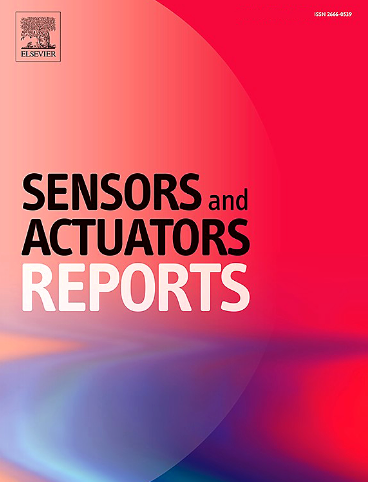Ratiometric fluorescent biosensors for quantitative lactic acid detection using CdTe@CdS quantum dots and lactate oxidase
IF 6.5
Q1 BIOTECHNOLOGY & APPLIED MICROBIOLOGY
引用次数: 0
Abstract
Lactic acid plays a crucial role in various physiological processes, particularly in cellular metabolism and muscle activity, as it is a key marker of anaerobic respiration and metabolic stress. In this study, we present a ratiometric fluorescent biosensor for lactic acid detection, utilizing a fluorescence quenching mechanism. The sensor comprises a hydrogen peroxide (H2O2)-sensing unit, based on photoluminescent core-shell cadmium telluride@cadmium sulfide quantum dots (CdTe@CdS QDs), along with a reference probe covalently bound to silica microparticle (SiO2 MPs), which acts as the substrate. Lactate oxidase (LOx) is immobilized on the microparticle surface, where it catalyzes the aerobic oxidation of l-lactate into pyruvate, generating H2O2 in the process. The increasing concentrations of lactate (0–30 mM) result in proportional quenching of the CdTe@CdS QDs’ photoluminescence due to H2O2, while the reference fluorescence emission remains stable. A lactate calibration curve has been determined using confocal laser scanning microscopy (CLSM), enabling quantitative evaluation of the sensor's ratiometric response and colorimetric shifts via image analysis. To demonstrate the versatility of this approach, we engineered two variations of the microsensor with distinct ratiometric setups, one using green- and the other red-emitting CdTe@CdS QDs, paired with either rhodamine isothiocyanate (RBITC) or 7-(diethylamino)coumarin-3-carboxylic acid (7ACC1) as the reference dyes, both co-immobilized with LOx enzyme on the microparticle surface. These innovative microsensors offer a simple yet effective tool for the quantitative detection of lactic acid, leveraging its H2O2-sensing capability of CdTe@CdS QDs in combination with to LOx enzyme activity.

比例荧光生物传感器定量乳酸检测使用CdTe@CdS量子点和乳酸氧化酶
乳酸在各种生理过程中起着至关重要的作用,特别是在细胞代谢和肌肉活动中,因为它是无氧呼吸和代谢应激的关键标志。在这项研究中,我们提出了一个比例荧光生物传感器乳酸检测,利用荧光猝灭机制。该传感器包括一个过氧化氢(H2O2)传感单元,基于光致发光核壳镉telluride@cadmium硫化量子点(CdTe@CdS QDs),以及一个与二氧化硅微粒(SiO2 MPs)共价结合的参考探针,后者作为底物。乳酸氧化酶(LOx)固定在微粒表面,催化l-乳酸的有氧氧化成丙酮酸,在此过程中产生H2O2。随着乳酸浓度(0-30 mM)的增加,CdTe@CdS量子点的光致发光因H2O2而成比例猝灭,而参比荧光发射保持稳定。使用共聚焦激光扫描显微镜(CLSM)确定了乳酸校准曲线,通过图像分析对传感器的比率响应和比色位移进行定量评估。为了证明这种方法的多功能性,我们设计了两种具有不同比例设置的微传感器,一种使用绿色和另一种使用红色发射CdTe@CdS量子点,与异硫氰酸罗丹明(RBITC)或7-(二乙胺)香豆素-3-羧酸(7ACC1)配对作为参考染料,两者都与LOx酶共同固定在微粒表面。这些创新的微传感器提供了一种简单而有效的乳酸定量检测工具,利用其CdTe@CdS量子点的h2o2传感能力与LOx酶活性相结合。
本文章由计算机程序翻译,如有差异,请以英文原文为准。
求助全文
约1分钟内获得全文
求助全文
来源期刊

Sensors and Actuators Reports
Multiple-
CiteScore
9.60
自引率
0.00%
发文量
60
审稿时长
49 days
期刊介绍:
Sensors and Actuators Reports is a peer-reviewed open access journal launched out from the Sensors and Actuators journal family. Sensors and Actuators Reports is dedicated to publishing new and original works in the field of all type of sensors and actuators, including bio-, chemical-, physical-, and nano- sensors and actuators, which demonstrates significant progress beyond the current state of the art. The journal regularly publishes original research papers, reviews, and short communications.
For research papers and short communications, the journal aims to publish the new and original work supported by experimental results and as such purely theoretical works are not accepted.
 求助内容:
求助内容: 应助结果提醒方式:
应助结果提醒方式:


